ADA laser levels: pros and cons, lineup, choice, use

In modern construction, as well as in marking and geodetic surveying, laser levels or levels are used. These devices appeared relatively recently, but quickly became popular due to their ease of use, wide possibilities, compactness and affordability. Among the many manufacturers of laser levels, ADA Instruments stands out - one of the leading brands in the market.

Advantages and disadvantages
The products of this brand are well known in the European and American markets, as well as in Russia and Asia. Production has been developing since 2008. ADA measuring instruments are distinguished by functionality, convenience and reliability. In the segment of measuring levels you can find tools for solving different tasks: laser levels, ordinary bubble (ADA TITAN 60 PLUS) or digital protractors like ADA Pro-Digit MICRO.
All models of laser levels from this company are equipped with convenient auxiliary functions for a simple and accurate measurement procedure. The built-in bubble level helps to align the instrument before aiming at the target to be measured. A horizontal dial is used to project a laser line onto an object. With the guide screw you can make fine adjustments. Ergonomic settings are provided by a control panel with a user-friendly intuitive button interface.
Smart light indication notifies the user about the activation of a particular operating mode of the device.



Users note the following advantages of ADA levels: good beam brightness (for some models, the brightness is adjustable), the ability to turn off one of the light planes (vertical or horizontal) to save battery power, compactness and high accuracy. According to reviews, people like simple controls that do not require unnecessary measurement steps.
Speaking of the disadvantages, it should be noted that professional laser levels are far from the cheapest on the market. Some users have noticed uneven beam brightness that diminishes towards the edges of the light plane. At the same time, the company announced models with a special function of uniform brightness distribution over the entire light plane.

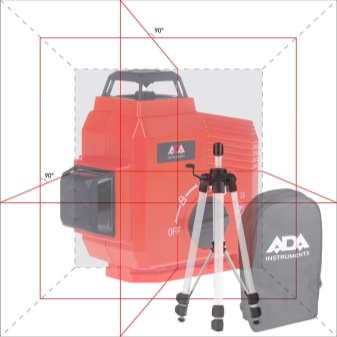
The lineup
Among the ADA laser levels, there are both professional instruments and appliances for the household segment. The Cube line is very popular. Compact model CUBE 360 has almost ideal characteristics for use in construction, marking, installation and decoration of premises. Despite the high cost, this level is often chosen for its high accuracy - a deviation of no more than 3 mm per 10 m, ease of operation with wide possibilities. The CUBE 360 has 2 brightness modes, one suitable for indoor use and the other for outdoor use. The range of the laser is sufficient for 20 m, and when using the detector, it increases to 70 m.
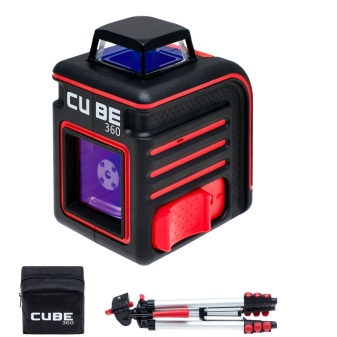

Cheaper, but rather functional electronic level - ADA 2D Basic level. Has 2 laser planes, which allows you to build both vertical and horizontal lines. The range of the laser is 30 m (with a receiver), that is, if necessary, it can also be used on a construction site outdoors. Therefore, the model has a housing with moisture and dust protection class IP54. The angle of the horizontal plane is 180 degrees, the vertical one is 160.
The level is conveniently controlled thanks to a simple panel with two buttons (one for switching between horizontal and vertical planes, the other for activating the mode with a receiver). There is also a toggle switch for turning the power on and off with the function of blocking the compensator. The device has a sound signal that notifies of a critical deviation from the horizon when focusing (the level will also signal this with flashing laser beams).
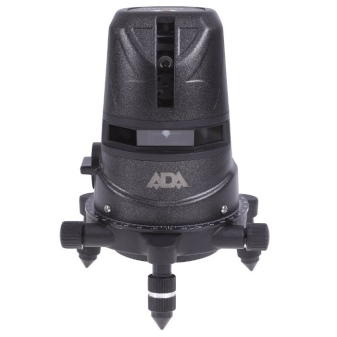

Ada cube mini - a popular household appliance. It is distinguished by its compactness and convenience. It is suitable for one-handed operation. Its range is 5 m, so the Cube Mini is used indoors. The sweep angle of the planes (vertical and horizontal) is 100 degrees.

The level of this model is sold in three different types of trim levels.
- Cube MINI Basic Edition - the simplest option, which includes the device itself and batteries for it.
- Cube MINI Home Edition - this configuration adds a universal mount and a protective case bag. The mount is a steel clip with soft pads and a rotating screw that allows you to mount the device at any angle.
- Cube MINI Professional Edition - a tripod is included in the package, which allows using the level for professional measurements and marking.
- Ada Cube 3D Basic Edition - A small tool with all the necessary functions. This model is battery efficient. You can turn off one of the planes to save power. To do this, use the button to select one of the laser beams. This button is located on the side of the tool.
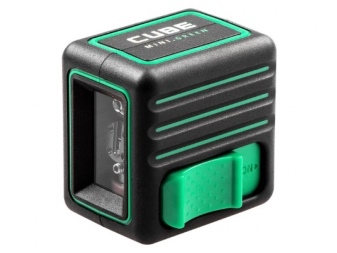

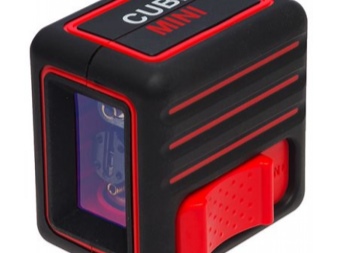

The selections correspond to the markings: 1 horizontal and 2 vertical lines, a single vertical line, or only horizontal and vertical lines (laser cross). If the battery power is low, the laser lines flash. The level has a case with increased protection, made in the form of a cube. Rubber pads protect the tool from damage. Thanks to the ribbed surface, the tool will not slip out of your hands. The pendulum expansion joint provides quick vertical alignment.
The maximum deviation from the vertical axis is 3. In case of deviation, an acoustic signaling is activated.
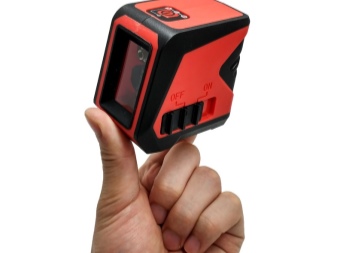

Selection Tips
When choosing one of the ADA product models pay close attention to the laser level range, on which it will depend on which part of the surface you can measure or mark. A beam projected outside this range loses accuracy. Therefore, the most convenient models are those that provide a range of 360 degrees.
Objects in the open air or in brightly lit rooms require brighter and clearer visibility of the laser beams for accurate measurements and markings. In this case, consideration should be given to purchasing a green beam rather than a red laser level, although the red laser is more common and generally less expensive than green laser levels. For the vast majority of indoor marking and measurement tasks, a red beam is sufficient.
Be careful when evaluating cheap models as the laser beam may be too dim to see even in bright light. In addition, such a tool is more likely to be less durable. It is recommended to choose a laser level for permanent use with an impact-resistant case of a confirmed protection class, since a fragile instrument can accidentally slip out of its holder and suffer from an impact.
Longer battery models are more convenient, especially when there is no way to get an extension cord to the jobsite.

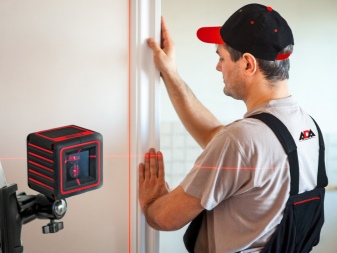
How to use?
Before work, it is worthwhile to calibrate the laser level from time to time. The vertical plane is checked with a plumb line. A common technique for checking the horizontal plane is by four points. Make 4 marks on the four sides of the level and rotate it several times around its axis. Each time, the laser line must pass at the same distance from the mark.
Place the instrument on a tripod or flat surface. If it is a manual fit model, you must ensure that the vials are in a horizontal position. This is adjustable with screws. Turn on the laser level. If it is a self-leveling model, give it time. The device emits a laser that indicates the level either on a wall or in an open space (depending on the type of laser level, this can be a point, multi-line or rotating laser showing the level at 360 degrees horizontally or vertically).
If you are working in an open area, then it is necessary to use a laser detector to detect the laser. Connect the detector to the measuring rod, adjust its position on the rod (up and down) until you hear a sound. This means that the detector has found the laser. When you find the level (with a detector or visually), take the desired measurements.
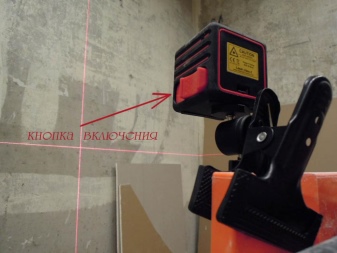

An overview of the ADA CUBE 2-360 laser level, see below.













The comment was sent successfully.